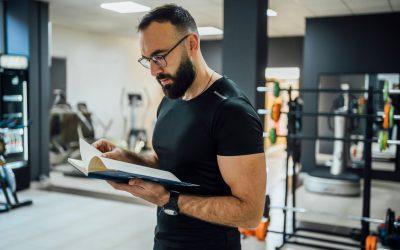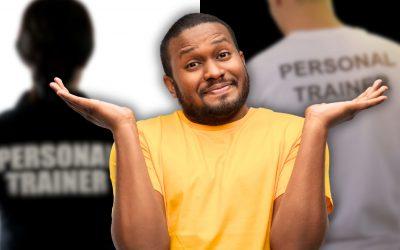
SESSION NOTES: Pulling Stamina (199-207, 638-640)
Complete parts A, B and C as required.
Programming Science:
This session focuses purely on ‘pull’ based movements.
It employs a combination of high rep stamina work and lower rep strength based work in multiple planes – both designed to help to eradicate this pulling strength and stamina weakness.
Although barbell work is often trained with a strength focus, upper body bodyweight movements are often only trained for high reps with stamina. However, the high percentage of fast twitch muscle fibres in the upper body make it perfect for adding load.
Health and Body Composition Benefits:
This session is a form of resistance training that provides a stimulus with lighter loads and higher volume than an absolute strength or power based session. While the high levels of fatigue in this session makes it less effective to increase strength and power, it will improve your stamina – the ability of your muscles to resist fatigue.
Often, higher repetition movements are neglected for the upper body (while walking/cycling etc are included for the lower body), but by including these higher repetition upper body movements, we’re helping to develop blood vessels in the upper body which will help reduce cardiovascular risk factors.
High repetition resistance training like this will also improve your flexibility (by going through a full range of motion), posture and coordination. It will also build stability around your joints and spine to give you a healthy musculo-skeletal system and reduce joint and back pain. These movements will also help develop tendon strength.
The strength-focussed portion of the session, in this case using your own body (and maybe added weight) as the load, makes you stronger. Strength is one of the greatest predictors of both your lifespan (how long you live) and your healthspan (how long you live in a healthy state).
Resistance training like this will also improve your flexibility (by going through a full range of motion), posture and coordination. It will also build stability around your joints and spine to give you a healthy musculo-skeletal system and reduce joint and back pain.
Because you’re using your own body as the form of resistance, this session will improve your strength to weight ratio – making you better able to move your body around.
As a result of this style of session, you will experience changes in blood chemistry, including favourable effects on cholesterol, blood glucose, triglyceride and lipid levels.
In terms of body composition, higher repetition, lower load movements are an important part of an exercise program for increasing lean muscle. Muscle is a metabolically active tissue, so increasing it will maximise how much energy your body burns at rest. This makes it an effective session to reach healthy levels of body fat, both visceral fat (around the organs) and subcutaneous fat (under your skin). After this session, your body will go through a prolonged state of ‘EPOC’ (excess post- exercise oxygen consumption), meaning you’ll continue burning energy long after you finish training – further aiding healthy body composition.
Performance Benefits:
The high repetition movements in this session train the ability of your muscles to resist fatigue – increasing their stamina. This comes from improvements in the efficiency of slow twitch (fatigue resistant) muscle fibres.
As a result of the volume of repetitions, this session will increase the mitochondrial density in your muscle cells, allowing them to more efficiently convert energy into fuel. This means you can sustain higher rates of muscle contraction before fatigue or failure.
The higher volumes will also increase capillary density in your muscles, allowing for efficient delivery of oxygen and fuel, and removal of waste products (further adding to the fatigue resistance).
The heavy levels of resistance in this session are designed to increase your upper body relative strength – increasing both your one rep max, and your ability to perform high reps of bodyweight movement. By being stronger relative to your weight, you can lift more, and you will be able to move your body faster and for higher reps because you’ll be lifting a lower percentage of your max.
As strength is an element of power, getting stronger will also improve your ability to move faster – beneficial for more power-based, explosive gymnastics movements.
This session will also improve the efficiency of your fast-twitch muscle fibres (those responsible for lifting heavy and fast), and will improve your neuromuscular efficiency (your ability to turn on a very high percentage of your muscle fibres).
Strategy:
Complete all parts of this session to the nest of your ability. The focus should be on lifting as heavy as possible for the strength work, and completing as many reps as possible in the higher rep stamina work.
How it Should Feel:
The limiting factor here should be localised muscular endurance for the higher rep work, meaning the muscles will be burning and it will be difficult to complete reps towards the end of each exercise.
In the lower rep strength work, each rep should be heavy and difficult.
Scaling Guidelines:
The intent of the stamina work in this session is to achieve very high repetitions, so scale as required to achieve this. Scale the load (with some form of assistance) rather than the range of motion.
For the strength work, add load or scale (ideally using bands) to achieve the desired strength effect.
Modify around injuries with exercises as close as possible to the stimulus of the movement you’re modifying.
Common Mistakes:
A common mistake is failing to scale enough (not adding enough assistance) for the stamina work. It should be high rep, so you’re limited by a ‘burning’ in the muscles, not by your lack of strength.




